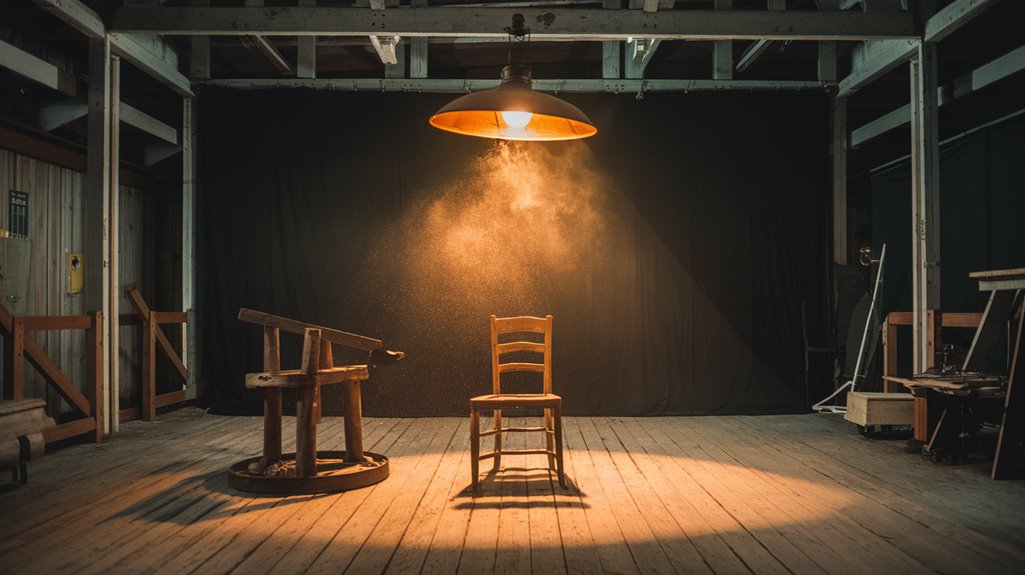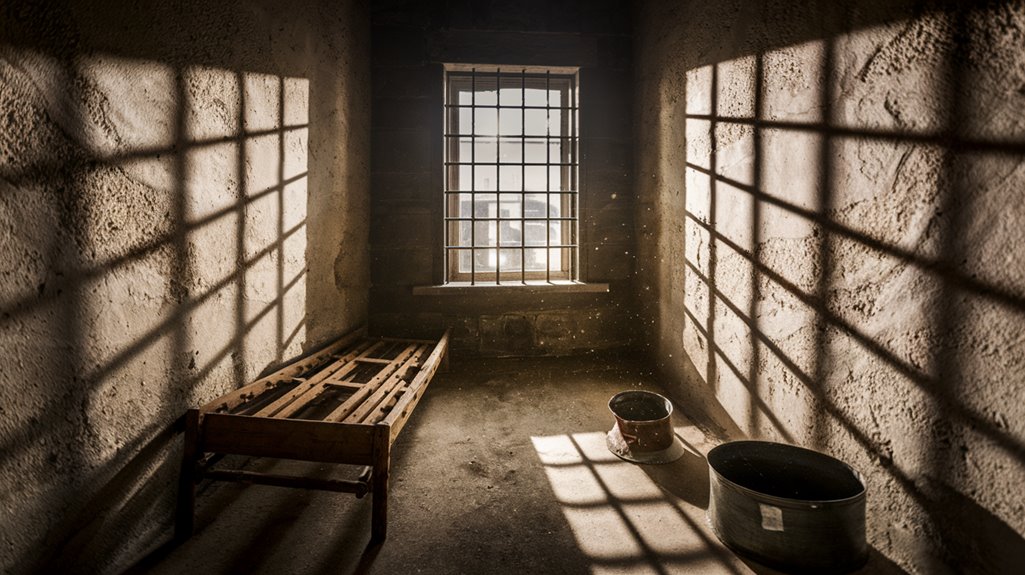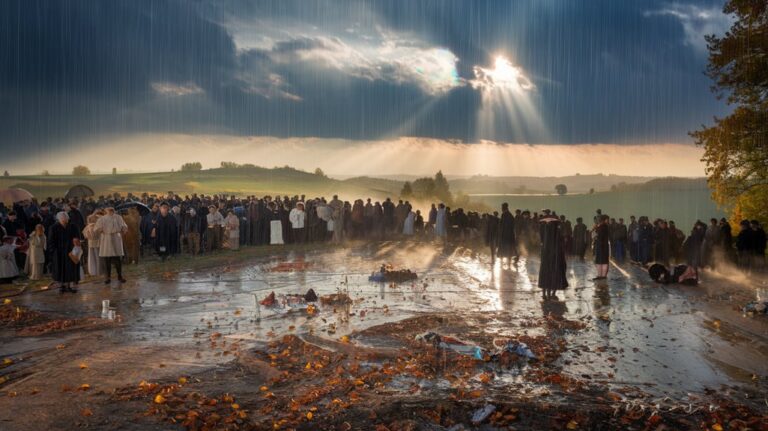The Murder That Nearly Killed the First Film
You might not know that before Hollywood dramatized Henri Young's story, his murder of Rufus McCain at Alcatraz nearly derailed the first-ever film project about the prison. While today's audiences know the sanitized version, the raw brutality of the actual 1939 incident left potential producers hesitant to touch the material. The stark contrast between historical fact and cinematic fiction raises compelling questions about how we've chosen to remember one of America's most notorious prison moments.
The Real Story Behind Henri Young's Alcatraz Days
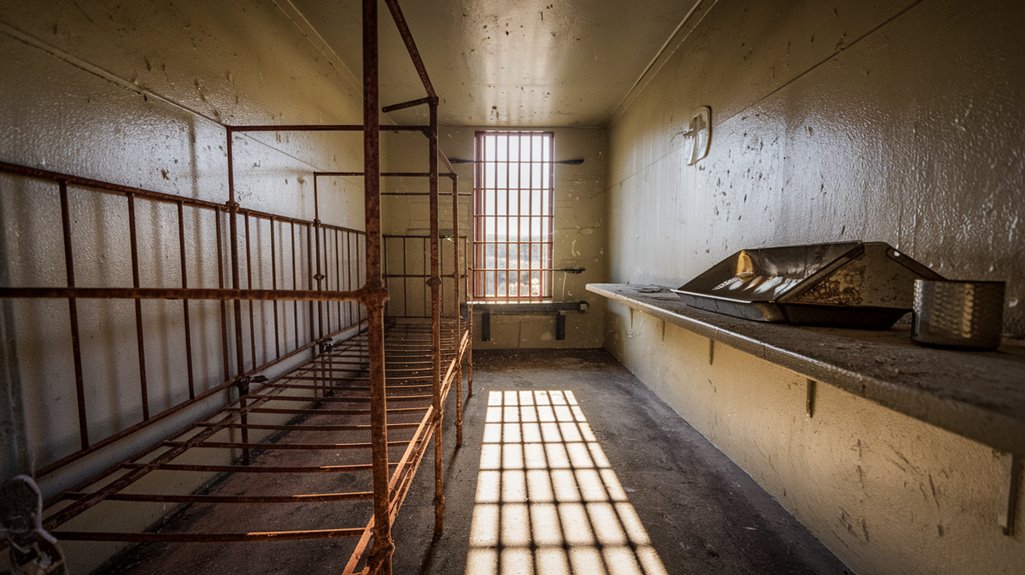
While many people know Henri Young from his portrayal in "Murder in the First," his real story at Alcatraz paints a more complex picture.
Before arriving at the infamous prison, he'd already established himself as a violent criminal, taking hostages during bank robberies and committing murder in Washington state. His initial arrest came after stealing $5 from a post office.
Young's most notorious moment came during the 1939 Alcatraz escape attempt with four other inmates. The failed breakout resulted in one death and landed Young in solitary confinement for three years.
When he finally returned to the general population, he took his revenge on fellow escapee Rufus McCain, killing him after just eleven days.
The murder trial that followed exposed the brutal conditions at Alcatraz, where Young claimed he lived without basic necessities like soap or proper bedding. After spending years in various prisons, he was eventually released in 1972 but disappeared after jumping parole.
Separating Movie Magic From Historical Facts
Since the birth of cinema, separating movie magic from historical truth has challenged both filmmakers and audiences. You'll find this struggle evident in every historical film, where directors must balance entertainment with authenticity.
When you watch historical dramas, you're often experiencing a blend of fact and fiction, as filmmakers take creative liberties to enhance storytelling and maintain viewer engagement. The evolution of film began with persistence of vision, allowing viewers to perceive a series of still images as continuous motion.
To appreciate historical films, you need to understand that historical accuracy isn't always the primary goal. While some productions aim for authenticity, others prioritize visual spectacle and dramatic impact. A film's ability to deliver compelling moral messages through historical events often proves more valuable than strict factual accuracy.
You can use resources like History vs. Hollywood to discover where films diverge from facts. What's essential is that filmmakers demonstrate competent knowledge of the era they're depicting, ensuring their creative choices serve the story without unnecessarily distorting historical truth.
The Brutal Reality of Solitary Confinement
Moving from the domain of cinematic storytelling to the stark confines of prison cells, the reality of solitary confinement reveals horrors far beyond what movies can portray.
When you're locked away in isolation, the solitary effects ravage both mind and body. You'll face chronic headaches, heart problems, and uncontrollable trembling, while your mental state deteriorates into a maze of anxiety, depression, and even psychosis. Being confined for twenty-three hours daily, inmates endure a punishing routine that pushes human endurance to its limits.
The isolation impact doesn't discriminate, though it falls heaviest on Black and brown individuals, youth, and those with existing mental illnesses. Studies show that approximately eighty thousand prisoners currently face these severe conditions in solitary confinement.
You'll witness how it transforms healthy people into shells of their former selves, leaving lasting scars that persist long after release. Even if you survive the immediate trauma, you're at higher risk of premature death within your first year of freedom.
A Tale of Two Lawyers: Abrams vs. Stamphill
Because the stakes of wartime justice hung in the balance, two legal minds would forever shape America's understanding of free speech through the landmark Abrams case.
You'll find the courtroom drama centered on opposing legal strategies: Justice Clarke, writing for the majority, argued that distributing anti-war leaflets posed a clear and present danger to America's war effort. He didn't hesitate to uphold the convictions of five Russian-born defendants under the Espionage Act. The defendants had circulated literature that called for a general strike in ammunition plants.
But Justice Holmes saw it differently. In his passionate dissent, he contended that these political pamphlets didn't create an imminent threat warranting prosecution. His perspective was shaped by his experiences with Jewish immigrant friends who faced harassment for their left-wing views. While Clarke's view won the day, ultimately imprisoning Abrams and his fellow activists, Holmes's dissenting philosophy would later influence modern First Amendment protections, proving that even defeated legal arguments can shape future justice.
The Murder That Changed Prison Reform
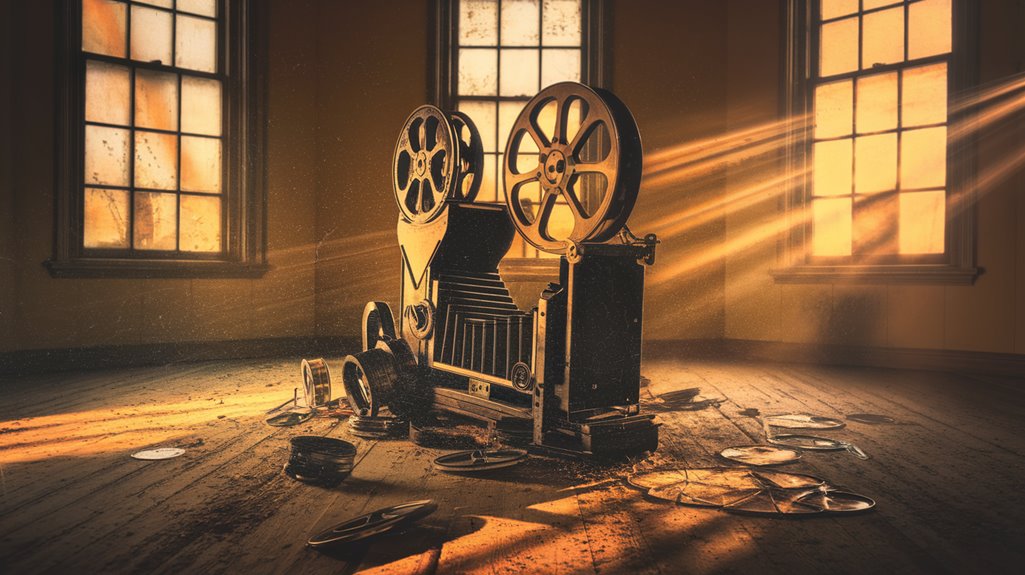
While First Amendment battles shaped free speech in America's courts, another legal doctrine would spark a nationwide debate about justice and reform: felony murder laws.
You'll find that these laws have created a system where even those who didn't directly participate in a killing can face life without parole, disproportionately affecting young people and communities of color.
Recent studies show that creating cognitive behavioral communities within prisons has proven effective in reducing recidivism rates and promoting rehabilitation.
Today's prison reform initiatives are tackling this challenge head-on.
Only Hawaii and Kentucky remain the two states in the nation that have rejected these controversial laws.
You're seeing the Federal Bureau of Prisons implement evidence-based rehabilitation strategies, while organizations like The Sentencing Project push to repeal or modify felony murder statutes.
The impact is clear: in Pennsylvania alone, 80% of those imprisoned under felony murder convictions are people of color, with most being under 25 at the time of their offense.
These statistics have become a rallying cry for meaningful reform and rehabilitation-focused alternatives.
Hollywood's Creative License and Its Impact
Throughout Hollywood's history, the film industry's creative license has sparked intense debates about the balance between artistic expression and historical accuracy. When filmmakers take artistic interpretation liberties, they often dramatize events, alter timelines, and modify characters to create more compelling narratives.
You'll notice this approach can lead to significant historical distortion, as movies frequently glamorize real-world occupations and omit mundane aspects of daily life. While these changes might enhance entertainment value and meet audience expectations, they can also mislead viewers about actual events and personalities. In police dramas, for instance, mundane tasks like paperwork are routinely excluded to maintain viewer interest. Investigative journalists especially take issue with Hollywood's portrayal of their profession, as the field requires extensive archival research rather than the action-packed adventures often depicted on screen.
Critics argue that such creative liberties can harm public understanding of history, while defenders emphasize the necessity of adaptation for different mediums. The challenge lies in finding the sweet spot between maintaining factual integrity and crafting engaging stories that resonate with modern audiences.

